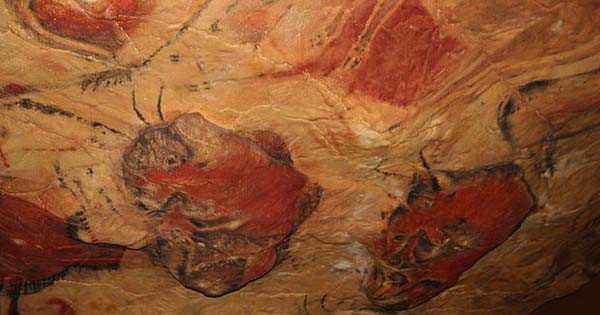
What is it about our species that we make art and view art and love art? I’m thinking of the ancient cave paintings in France and Spain, begun 40,800 years ago—the age of the oldest red-painted dot to be accurately dated. (It’s found in a cave called El Castillo in the Spanish province of Cantabria.) The high cave-art era occurred between 17,000 and 12,000 years ago. How modern they seem, those lyrical representations of bison, horse, mammoth, ibex, deer, and auroch (pronounced OUR-rock, an ancestor of the dairy cow). They were made by drawing curved lines in charcoal and adding shadows and highlights in mineral-derived colors such as red ochre to convey movement and three-dimensionality.
How we see—how the brain perceives what the eyes take in—is entangled with how we see art, how we make art. This is one thread in the book The Age of Insight: The Quest to Understand the Unconscious in Art, Mind, and Brain by neuroscientist Eric R. Kandel. If I were going to be washed up on a desert island with my choice of 10 books, along with, I would hope, a good supply of espresso, this thick and handsome volume—a tapestry of art history, psychology, creativity studies, and brain science—would be one of them.
How do we see? Light waves hit the sheet of neurons, the retina, that lines the inside rear wall of the eye. These neurons, called retinal ganglion cells, fire and send their electrical pulses along the optical nerve, “a biological cable,” in Kandel’s words, “composed of more than a million axons.” The electrical pulses reach the lateral geniculate nucleus—a part of the thalamus, our brain’s receiver and central relay station of sensory information.
The lateral geniculate nucleus sends sends the electrical pulse to the primary visual cortex, located at the back of the brain. These millions of neurons are stimulated by whatever they are sensitive to, such as motion or color or edges. Neurons sensitive to edges respond to a line at one, and only one, angle or orientation. Kandel writes, “If a black line or edge is rotated on an axis before our eyes, slowly changing the angle of each edge, different neurons will fire in response to different angles.” Next the primary visual cortex projects its electrical pulses forward. Farther forward, other parts of the brain take these separate ever-arriving bits of data and construct the image.
So the brain is an artist, creating images out of separate visual components. Maybe our ability to read a curve drawn on a flat surface as a three-dimensional figure is related to our reception of visual data from the world as edges—lines and curves. Maybe when artists draw they are doing with their hand what the brain is doing with its electrical pulses.
Consider, too, our brain’s extensive face-recognition equipment, including the ability to read feeling in facial expression and body language. Our “face patches,” located low in the temporal lobe, along with our emotion-tracking amygdala, light up equally when confronted with a face or a picture of a face. Art is intermingled with biology and inseparable from it. As we are wired to recognize faces, so portraits and self-portraits—images of the human face and body—have proliferated throughout the history of art.
And too, our brain has its “theory of mind”—specific areas steadily assessing what’s going on in the next person’s head. We have our mirror neurons that fire when we move and fire in just the same way when somebody else moves. Our “theory of mind” works in life and in art. When viewing the sad, disconnected, gaze-averting circus figures in Picasso’s painting Family of Saltimbanques, we may feel sad, though we are looking at nothing more than lines and color on a flat surface.
Making art requires persistence, the ability to work in a rather dogged manner over time, openness to unconscious material plus the patience to receive it, technical skill with materials, and the practice of engaging in a dialogue with the work as it develops. Making art also requires a particular sort of brain. The sort of brain we happen to have.

